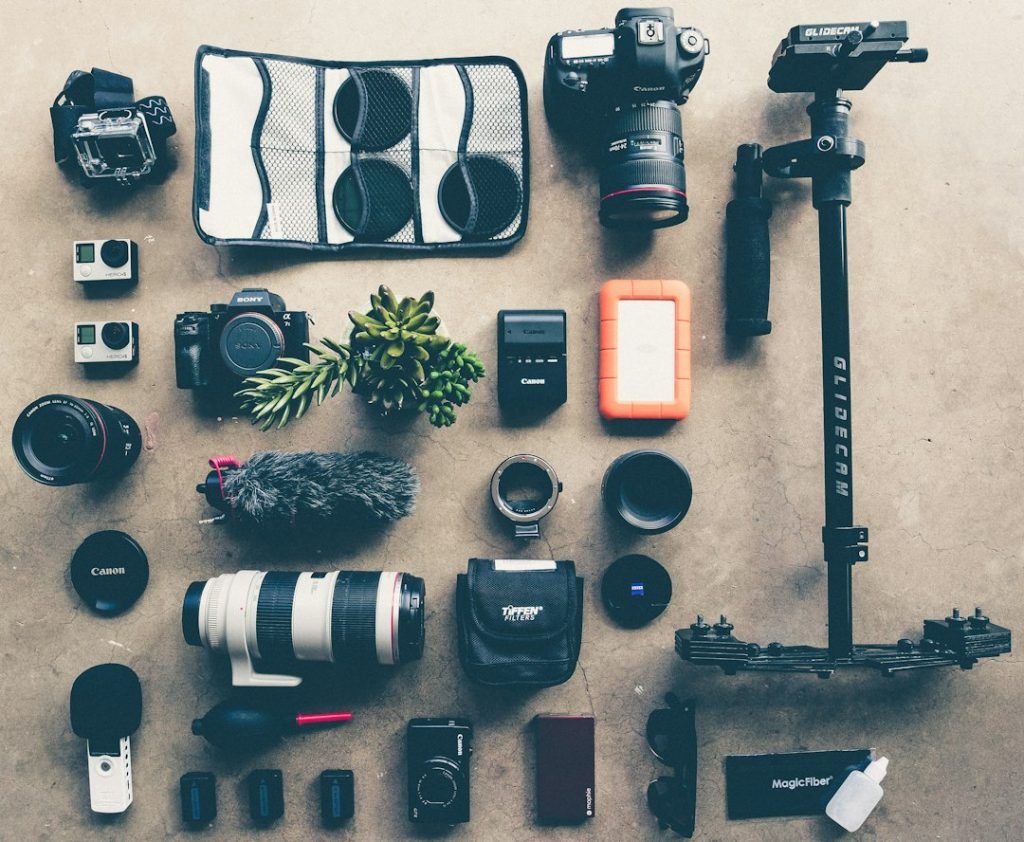

How to Talk About Photography Techniques in Spanish: 25 Photographic Terms
Learning Spanish photographic terminology is essential for photographers who want to expand their skills and reach a wider audience. Whether you are a professional photographer or an amateur enthusiast, knowing the correct terms in Spanish can help you communicate with Spanish-speaking clients, collaborate with other photographers, and understand photography resources in Spanish. Additionally, understanding Spanish photographic terminology can enhance your photography skills by allowing you to explore different techniques, camera settings, and composition styles that may be unique to the Spanish-speaking world.
Table of Contents
ToggleKey Takeaways
- Spanish photographic terminology can be confusing for non-native speakers.
- Understanding the basics of photography in Spanish is essential for effective communication.
- Essential Spanish vocabulary for photography techniques includes terms for aperture, shutter speed, and ISO.
- Describing camera settings in Spanish requires knowledge of terms for exposure, focus, and white balance.
- Spanish terminology for different types of cameras includes DSLR, mirrorless, and point-and-shoot.
Understanding the Basics of Photography in Spanish
To effectively communicate about photography in Spanish, it is important to understand the basic concepts. Some key terms to know include:
– Fotografía: Photography
– Cámara: Camera
– Objetivo: Lens
– Enfoque: Focus
– Exposición: Exposure
– Diafragma: Aperture
– Velocidad de obturación: Shutter speed
– ISO: ISO
– Balance de blancos: White balance
In addition to these basic terms, it is also helpful to know the different types of cameras and lenses. The most common types of cameras include:
– Cámara réflex: DSLR camera
– Cámara sin espejo: Mirrorless camera
– Cámara compacta: Compact camera
– Cámara de película: Film camera
When it comes to lenses, there are various options available, each with its own purpose and function. Some common lens types include:
– Lente gran angular: Wide-angle lens
– Lente estándar: Standard lens
– Lente teleobjetivo: Telephoto lens
– Lente macro: Macro lens
Understanding these basic concepts and terminology will provide a solid foundation for further exploration of photography techniques in Spanish.
Essential Spanish Vocabulary for Photography Techniques
Once you have a grasp of the basics, it is important to learn the most common photography techniques in Spanish. Some essential terms to know include:
– Paisaje: Landscape
– Retrato: Portrait
– Macrofotografía: Macro photography
– Fotografía de acción: Action photography
– Fotografía de larga exposición: Long exposure photography
– Fotografía en blanco y negro: Black and white photography
– Fotografía de calle: Street photography
Knowing these techniques in Spanish will allow you to better understand tutorials, workshops, and resources in the language. It will also enable you to communicate your preferences and ideas to other photographers.
How to Describe Camera Settings in Spanish
Describing camera settings accurately is crucial for achieving the desired results in photography. Here are some important camera settings and their Spanish terminology:
– Modo manual: Manual mode
– Modo automático: Automatic mode
– Prioridad de apertura: Aperture priority mode
– Prioridad de obturación: Shutter priority mode
– Compensación de exposición: Exposure compensation
– Enfoque automático: Autofocus
– Enfoque manual: Manual focus
Understanding these settings and being able to describe them in Spanish will allow you to have more control over your camera and achieve the desired effects in your photographs.
Spanish Terminology for Different Types of Cameras
There are various types of cameras available, each with its own advantages and disadvantages. Here is an overview of the different types of cameras and their Spanish terminology:
– Cámara réflex: DSLR camera – These cameras offer interchangeable lenses, manual controls, and excellent image quality. They are commonly used by professional photographers.
– Cámara sin espejo: Mirrorless camera – These cameras are similar to DSLRs but do not have a mirror mechanism. They are smaller and lighter, making them more portable.
– Cámara compacta: Compact camera – These cameras are small, lightweight, and easy to use. They are great for everyday photography and travel.
– Cámara de película: Film camera – These cameras use film instead of digital sensors to capture images. They offer a unique aesthetic and are popular among film photography enthusiasts.
Understanding the advantages and disadvantages of each type of camera will help you make informed decisions when choosing the right equipment for your photography needs.
Exploring Spanish Terms for Lens Types and Functions

Lenses play a crucial role in photography, allowing photographers to capture different perspectives and achieve various effects. Here are some common lens types and their Spanish terminology:
– Lente gran angular: Wide-angle lens – These lenses have a shorter focal length, allowing you to capture a wider field of view. They are great for landscape and architectural photography.
– Lente estándar: Standard lens – These lenses have a focal length similar to the human eye, making them versatile for various types of photography.
– Lente teleobjetivo: Telephoto lens – These lenses have a longer focal length, allowing you to zoom in on distant subjects. They are commonly used in sports and wildlife photography.
– Lente macro: Macro lens – These lenses are designed for close-up photography, allowing you to capture intricate details of small subjects.
Understanding the functions of different lenses and their Spanish terminology will enable you to choose the right lens for each photographic situation.
Spanish Words for Lighting Techniques in Photography
Lighting is a fundamental aspect of photography, and understanding different lighting techniques is essential for creating compelling images. Here are some lighting techniques and their Spanish terminology:
– Luz natural: Natural light
– Luz artificial: Artificial light
– Luz suave: Soft light
– Luz dura: Hard light
– Luz frontal: Frontal light
– Luz lateral: Side light
– Luz trasera: Backlight
Knowing these lighting techniques in Spanish will allow you to effectively communicate your lighting preferences and experiment with different lighting setups in your photography.
Capturing the Perfect Shot: Spanish Vocabulary for Composition
Composition is the arrangement of elements within a photograph, and it plays a crucial role in creating visually appealing images. Here are some composition techniques and their Spanish terminology:
– Regla de los tercios: Rule of thirds
– Simetría: Symmetry
– Líneas guía: Leading lines
– Punto de fuga: Vanishing point
– Espacio negativo: Negative space
– Encuadre: Framing
Understanding these composition techniques in Spanish will allow you to effectively communicate your vision and capture visually striking photographs.
Spanish Terms for Editing and Post-Processing in Photography
Editing and post-processing are essential steps in the photography workflow, allowing photographers to enhance their images and bring their creative vision to life. Here are some editing and post-processing techniques and their Spanish terminology:
– Edición de imágenes: Image editing
– Ajuste de exposición: Exposure adjustment
– Corrección de color: Color correction
– Retoque de piel: Skin retouching
– Enfoque: Sharpening
– Recorte: Cropping
Knowing these editing and post-processing techniques in Spanish will enable you to effectively communicate your editing preferences and achieve the desired results in your photographs.
Tips for Improving Your Spanish Photography Vocabulary
To improve your Spanish photographic terminology, here are some tips:
1. Take a language course or workshop specifically tailored for photographers. These courses will focus on teaching you the necessary vocabulary and phrases related to photography.
2. Practice reading photography resources, tutorials, and articles in Spanish. This will expose you to different terminology and help you familiarize yourself with the language.
3. Watch photography videos or listen to podcasts in Spanish. This will help you improve your listening skills and reinforce your understanding of photographic terminology.
4. Engage with the Spanish-speaking photography community. Join online forums, social media groups, or attend photography meetups where you can interact with other photographers and practice your Spanish.
5. Create flashcards or use language learning apps to memorize and review photography vocabulary regularly.
By consistently practicing and immersing yourself in the Spanish-speaking photography world, you will gradually improve your vocabulary and become more confident in communicating about photography in Spanish.
If you want to learn Norwegian, you can register for classes here. We look forward to hearing from you and helping you become fluent in Norwegian.





